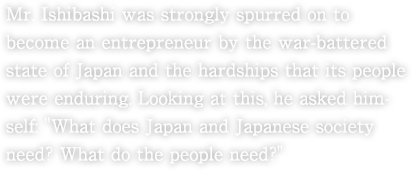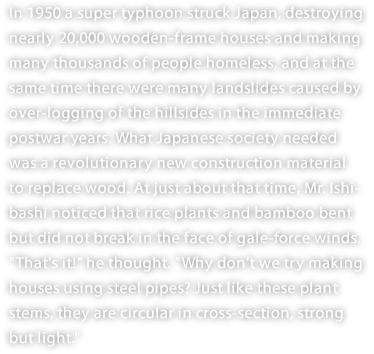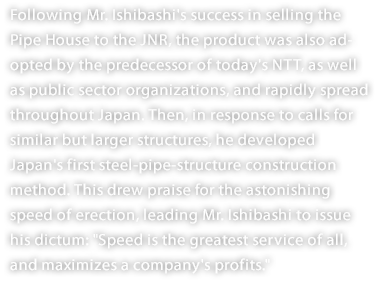
- The Construction Revolution Top
- A steel-frame structure, imitating the strength of nature
- Company founded with just 18 staff; Pipe House invented
- Pipe House helps development of Japan's nationwide railway network
- Pipe House sells well, company moves into steel-structure construction
- Groundbreaking movable classroom helps solve social problem
- Business Fields:Business
















































